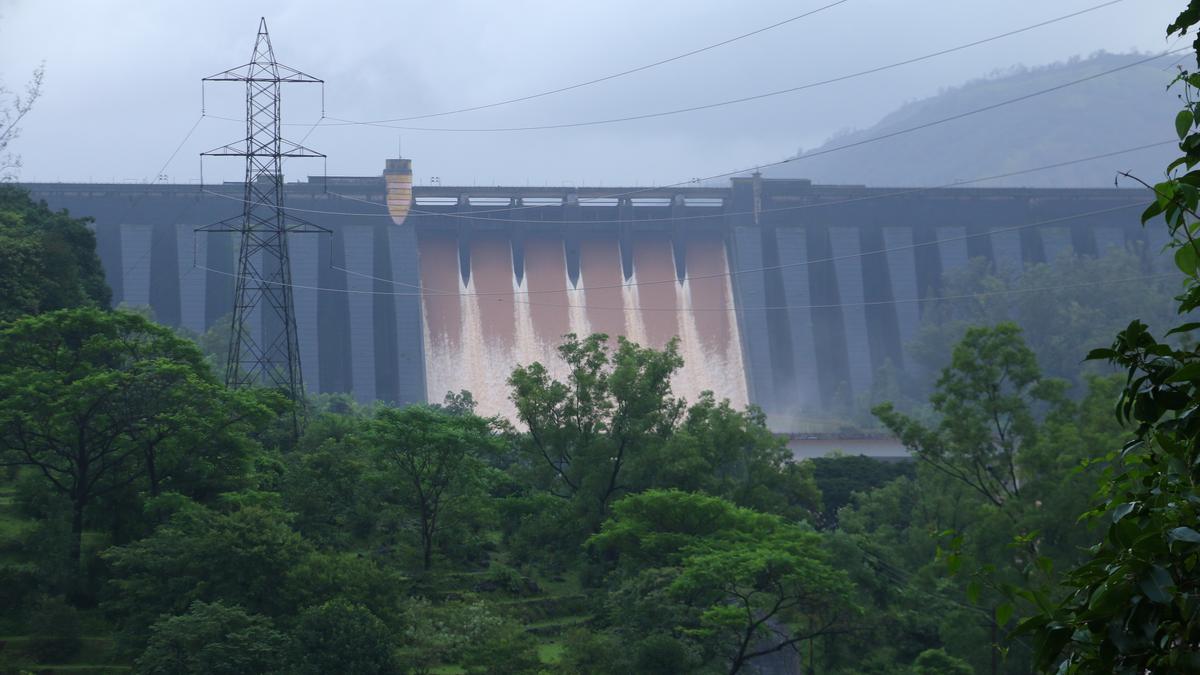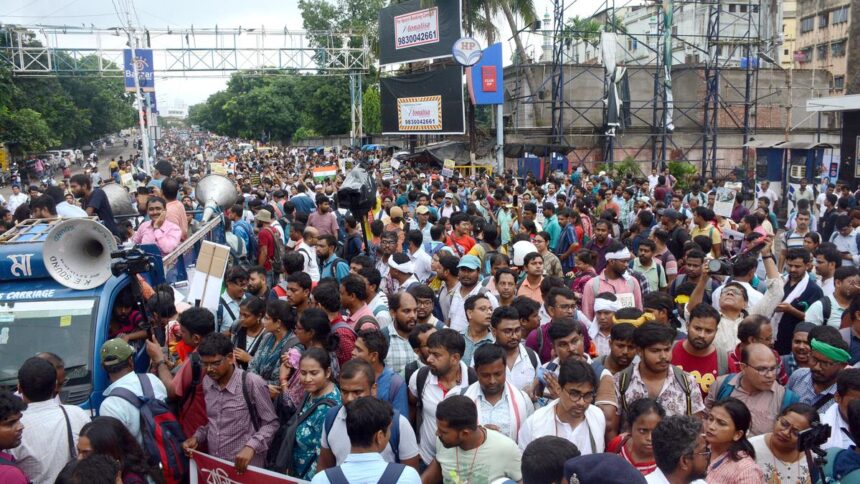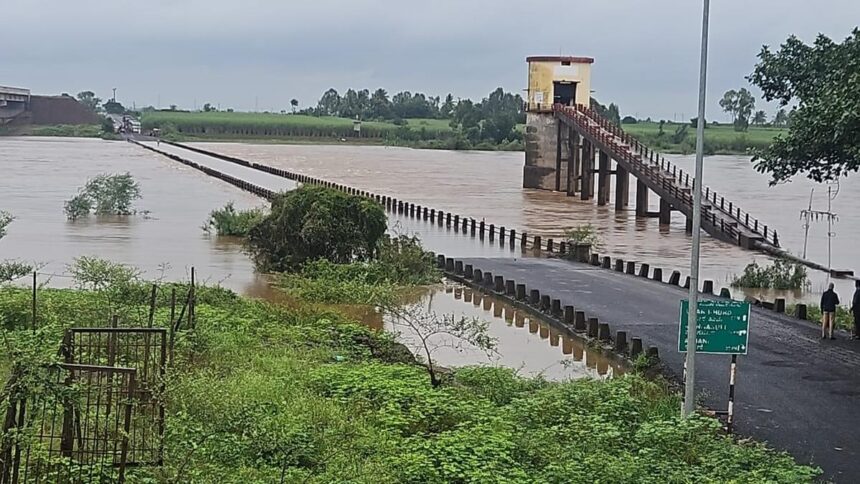Earthquakes are usually natural — but not always. Sometimes some natural factors can combine with human activities to lead to earthquakes as well. Quakes induced by human activities are called human-induced earthquakes. According to one estimate researchers discussed in Seismological Research Letters in 2017, more than 700 human-induced earthquakes have been recorded around the world in the last 150 years, and they are becoming more common.
Human activities like mining, extracting groundwater, impounding water behind a dam, injecting fluids into the ground, constructing tall buildings, and engineering coastal structures, among others, have been shown to induce seismic activity. This is because, according to experts, loading and unloading the crust in a repeated manner can cause strain to accumulate between tectonic plates, which would in turn modulate seismic activity.
In India, seismologists have also been studying how the amount of water above and below the ground can affect the geological processes.

A 2021 study in Scientific Reports reported that shallow earthquakes recorded in the National Capital Region could be linked to excessive groundwater extraction in the region for farming and human consumption.
“It was seen that between 2003 and 2012, when the water table had depleted significantly, there was an increase in seismic activity. The seismic activity reduced after 2014 when the water table stabilised,” Bhaskar Kundu, associate professor at NIT Rourkela and one of the authors of the study, told The Hindu.
Managing extraction
When groundwater is pumped out, the mass of water maintaining the pressure under the earth is removed, creating jolts on the surface.
“The situation is not of major concern because these earthquakes in the Delhi-NCR region are usually minor, with the maximum going up to 4.5 magnitude,” C.P. Rajendran, geoscientist and author of The Rumbling Earth: The Story of Indian Earthquakes, said. “It can go up to 5.5, which for a densely populated city like Delhi could have risks.”
This is because Delhi lies on several faultlines and is in the Zone 4 seismic risk category, meaning it’s a quake-prone region.
The risk for earthquakes induced by groundwater extraction is spread across the Gangetic plains, where the water table has been dropping in leaps, Dr. Rajendran said. This is mostly because crops sown in the region still need large quantities of water and very little of that thirst is quenched by rainfall.
He added that there is a need to manage the rate of groundwater extraction and its recharge in a scientific manner and while considering the rate of seismic activity in the region.
In the past, human-induced earthquakes have devastated lives and property, caused foremost by large dams that change the water load on the surface. On December 11, 1967, for example, an earthquake of 6.3 magnitude wrought significant damage in Koynanagar, a village in Maharashtra. More than 180 people were killed and thousands of houses were destroyed. Several studies that followed blamed the disaster on water overloading in the Koyna hydroelectric dam nearby.
Similarly, research has recorded an increase in seismic activity around the Mullaperiyar dam in Idukki, Kerala, which like Delhi also lies in an earthquake-prone zone.

Energy and quakes
“The U.S., which has recorded reservoir-induced earthquakes, has implemented regulations on how quickly a dam should be filled and emptied. Such regulations should also be enforced in India to prevent earthquakes,” Vineet K. Gahalaut, Chief Scientist at the National Geophysical Research Institute, told The Hindu.
He also said seismic activities in a region should be properly evaluated before a dam is built there.
“Huge dams in seismically active areas like the Himalayas are not recommended because the water load and percolation could change the local stress regime,” Dr. Rajendran said.
India’s growing energy demand also increases the risk of this type of disaster.
“The methods used to extract energy to meet our needs have significant risks on our earth, be it oil or hydropower,” Dr. Gahalaut said.
Fracking — where liquids are injected into the ground to push rocks apart and allow oil and natural gas — has also been shown to induce earthquakes, Dr. Gahalaut added. India currently has 56 fracking sites across six States.
In Palghar district in Maharashtra, which has been experiencing a sequence of quakes since 2018, experts have said plate deformation is occurring in an isolated manner. Initial findings by seismologists indicated that the cause could be fluid migration due to rainfall.
“Strong seismic networks using instruments need to be established across India in regions like these, which are experiencing isolated plate deformation, to monitor and track seismic activity more accurately,” Dr. Kundu said.
Impact of climate change
Scientists have said that climate change can indirectly affect the occurrence of earthquakes and render them more frequent over time. The melting of glaciers due to global warming has been found to trigger earthquakes around Antarctica and Greenland. Changes in rainfall patterns due to climate change have also been known to modulate the water loading process on the surface.
For example, sudden heavy rainfall could alter the stress accumulated between tectonic plates and induce seismic activity. The area around the Sahyadri range of the Western Ghats has been recording tremors due to heavy rainfall for this reason.
“The height of the mountains should have been reduced considering the rate of rainfall. However, the mountains have maintained their height due to seismic activity,” Dr. Gahalaut said.

Changing rainfall patterns can also change the soil chemistry, Dr. Rajendran said, affecting cropping patterns and compelling farmers to turn to groundwater for irrigation, which can also induce seismic activity.
Similarly, longer droughts can also reactivate seismic faults. Such a drought-induced earthquake was recorded in California in 2014.
“The risk of earthquakes is not present at all locations where there is groundwater depletion or huge dams, They have only been recorded in areas that are present on faultlines or are facing plate deformation processes,” according to Dr. Kundu.
At present, the rate at which strain has been accumulating along plates and the fraction of this stress that is due to human activities is not possible to ascertain, he added. Experts have thus warned against concluding that such activities are solely to blame for tremors or earthquakes. Research thus far has only shown that these activities could postpone or accelerate tectonic processes causing these movements.
Published – July 22, 2025 05:30 am IST




















